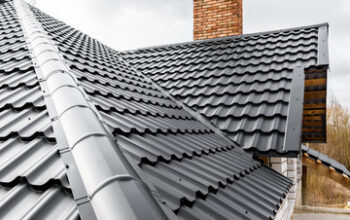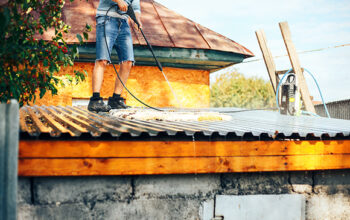The roof is the top covering of a building. It is made of a variety of constructions and materials and provides protection from weather conditions. It is considered an integral part of the building envelope. There are several different types of roofing including shingles, sheet metal, stone lintels, and felt paper.
Felt paper is a versatile material that is often used for roofing and painting projects. It’s also useful for wall siding and flooring. Felt paper can also be crafted into beautiful paintings. It is usually made of two or three layers. Felt paper is made by coating it with hot coal-tar pitch and then passing it through pressure rolls. It’s then made into a compact roll for sale.
Felt paper is typically 15 pounds in weight. This weight is similar to asphalt shingles, but it’s stronger and more resistant to wind. It also provides better insulation. It can be cut with scissors and is easy to install. Felt paper is also available in a variety of colors, which makes it a versatile choice for roofing. It can be used to cover existing asphalt shingles or wood shakes.
Felt paper is typically made of synthetic fibers, such as nylon and polyester. This material is durable, water-resistant, and relatively inexpensive. Felt paper is typically priced in pounds per square foot (PSF). For example, a 15-pound felt underlayment costs about 1.5 pounds per square foot. Likewise, a 30-pound felt is about 2.5 pounds per square foot. It is important to measure the roof to determine which type will work best for you.
The traditional roofing felt was made from compressed wool fibers. It served as a temporary barrier and an extra layer of protection. However, the material’s water resistance was limited. Compared to synthetic roofing, it was cheaper to produce. Still, some building owners preferred to use synthetic materials.
When choosing shingles for your roofing project, you want to choose a material that is durable. Shingles for roofing can last up to 20 years, but extreme weather and heat can damage them. To extend their lifespan, be sure to store them in a cold, dry place. Humidity and heat are the two worst enemies of shingles.
Shingles can be made of asphalt or fiberglass, and there are three basic types available. Each type offers a different look, as well as the option of a non-prorated enhanced lifetime guarantee. You can also get a cottage-style roof that has curved eaves and gables. Shingles can be pre-bent using steam, and this style can give your home a unique architectural feature. It can also improve the curb appeal of Tudor Revival-style houses.
Shingles for roofing are also available in a variety of different colors. You can choose a color that matches your home’s interior. If you’re concerned about how much you’ll spend, you should remember that a new roof typically requires a similar amount of underlayment as an old one.
The main ingredient in shingles is asphalt, which is a by-product of oil refining and holds granules. Asphalt is oxidized, which makes it tougher. It’s then mixed with a fine mineral powder to improve its weather and fire resistance.
There are many advantages to installing sheet metal roofing on your building. It offers exceptional value and striking architectural aesthetics. This type of roof is easily fabricated on-site and can be installed in a variety of applications. Check out the project portfolio section of our website to see a sample of our work. It is an excellent choice for many commercial and industrial building projects.
Metal roofing can be made from many different types of materials. Titanium, stainless steel, carbon steel, and aluminum are just a few. Some materials may be rare and difficult to find, but a distributor can help you choose the right metal for your building. They can perform services like slitting, shearing, tension leveling, and annealing to meet your specifications. Some distributors specialize in certain industries, including the food and beverage industries, aerospace, and chemical industries.
Another benefit of metal roofing is that it is durable. It can last for up to half a century or more, depending on its location. As a result, sheet metal roofs are excellent options for buildings in locations with harsh weather conditions. A new roof made of sheet metal can also be more cost-effective than other types of roofs. Some states offer tax incentives for homeowners who opt for this type of roofing.
One of the most important tools when it comes to installing sheet metal roofs is a tinner’s hammer. This tool is very versatile and comes in different sizes and shapes. It is important to choose a hammer that is comfortable for you to hold while working on your project.


